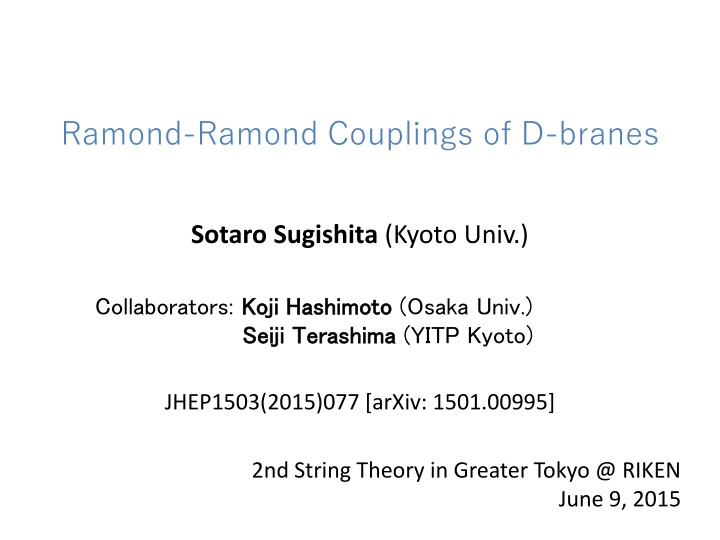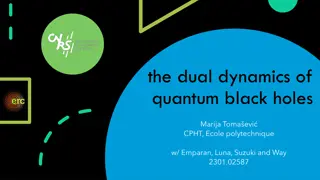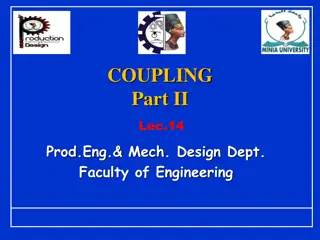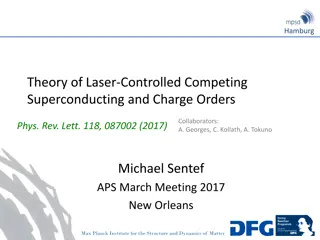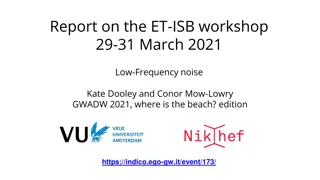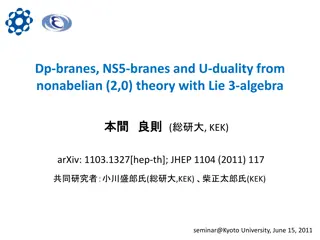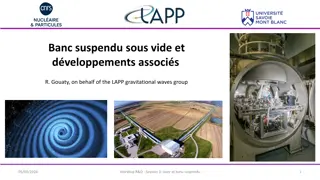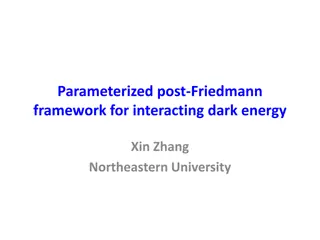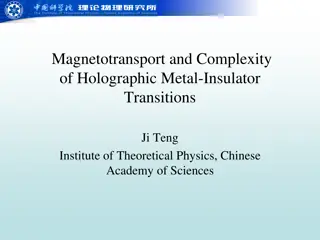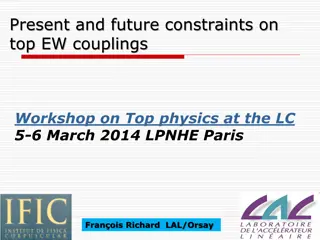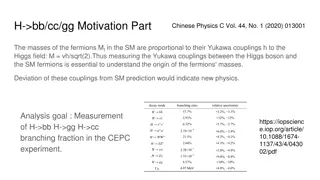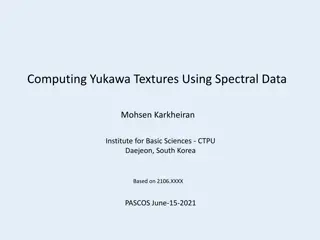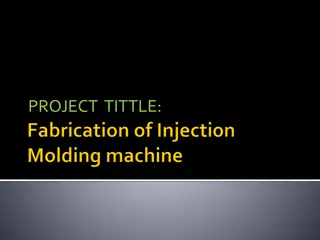Ramond-Ramond Couplings of D-branes
Superstring theory encompasses massless, massive, and tachyonic modes, including Ramond-Ramond fields crucial for understanding interactions among D-branes. Explore RR couplings, BSFT, and RR sector analysis to unveil fundamental aspects
Download Presentation

Please find below an Image/Link to download the presentation.
The content on the website is provided AS IS for your information and personal use only. It may not be sold, licensed, or shared on other websites without obtaining consent from the author.If you encounter any issues during the download, it is possible that the publisher has removed the file from their server.
You are allowed to download the files provided on this website for personal or commercial use, subject to the condition that they are used lawfully. All files are the property of their respective owners.
The content on the website is provided AS IS for your information and personal use only. It may not be sold, licensed, or shared on other websites without obtaining consent from the author.
E N D
Presentation Transcript
Ramond-Ramond Couplings of D-branes Sotaro Sugishita (Kyoto Univ.) Collaborators: Koji Hashimoto Koji Hashimoto (Osaka Univ.) Seiji Seiji Terashima Terashima (YITP Kyoto) JHEP1503(2015)077 [arXiv: 1501.00995] 2nd String Theory in Greater Tokyo @ RIKEN June 9, 2015
1. 1. Introduction Introduction Superstring theory there are massless modes: graviton, Ramond-Ramond fields, photon (gluon), gaugino there are also massive modes. (mass)2 there are also tachyonic modes. open string which stretches from D-brane to anti-D-brane contains a tachyonic mode D-brane anti-D-brane
superstring theory = massless fields + an infinite number of massive fields + (tachyon) with specific non-local int To find the true vacuum of theory, we should understand how these modes interact with each others in off-shell regions. Here, consider RR couplings.
Ramond-Ramond couplings of D-branes D-branes have RR charges. [Polchinski (1995)] open string modes on D-brane interact with RR fields in the bulk. RR fields massless gauge field How do other modes of open string couple to RR-fields?
The generalization including tachyon modes on non-BPS D- branes or D-branes-antiD-branes was done in the context of BSFT. [Kraus & Larsen (2000), Takayanagi, Terashima & Uesugi (2000)] BSFT (Boundary String Field Theory) BSFT is a formulation of open string field theory. [Witten (1992)] For superstring, BSFT action is just given by the disk partition function of NLSM for on-shell closed string bkgd with off-shell bdry int. disk partition function [Kutasov, Marino & Moore (2000), Marino (2001), Niarchos & Prezas (2001)]
Ramond-Ramond sector disk partition function for RR sector with bdry int of photon \begin{align*} I_{\rm B} = \int \! d\tau \; \left( -i \dot{X}^\mu A_{\mu}[X] + \frac{i}{2} \psi^\mu \psi^\nu F_{\mu\nu}[X] \right) \end{align*} actually gives RR coupling: there is no derivative correction. Our work We derive the general RR coupling formula including massive modes of open strings on D9-branes using SUSY localization technique.
2. SUSY localization closed string background: flat + constant RR field \begin{align*} S_{\rm worldsheet} = \frac{1}{4 \pi} \int d^2z \; \left[ \partial_{\bar{z}} X^\mu \partial_{z} X^\mu+F^\mu F^\mu +\psi^\mu \partial_{\bar{z}} \psi^\mu +\tilde{\psi}^\mu \partial_{z} \tilde{\psi}^\mu \right] \end{align*} We consider that the worldsheet is not disk but cylinder. the result does not depend on the length of cylinder. semi-infinite cylinder ~ disk bulk action is conformal. periodic = RR sector
What we compute is the following path integral: constant RR field fermion zero modes Boundary conditions consider only D9-branes (and anti-D9 branes) Neumann b.c.
(1,1) SUSY transformation (off-shell) Due to the bdry cond, only half of the SUSY is preserved We apply the localization technique using this worldsheet-SUSY.
SUSY localization technique SUSY exact term SUSY inv. is SUSY inv. consider only SUSY inv boundary interactions
evaluation in the limit ? nonzero modes: can carry out path-int can neglect the contributions to zero modes: not appear in path int int of zero modes
a comment We don t need spacetime SUSY, because we use only worldsheet SUSY. We can also consider non-BPS D9-branes or D9D9 pairs. Next, I write down the general supersymmetric boundary interaction, and evaluate it on the localization locus.
3. General RR couplings Let s write down general susy bdry int. convenient to use superfield e.g. the boundary interactions for photon
single BPS D9-brane general susy bdry int is given by the sum of possible terms: \begin{align*} \tilde{A} \end{align*} should be fermionic. Localization computation says we can replace totally antisymmetric only antisymmetric modes can contribute to RR couplings
(p+1)-form D9-brane charge formula
? D9-D9 pairs field strength Quillen s superconnection [cf. Kawamoto & Watabiki] fields of open strings ending on DD or DD fields of open strings ending on D D
? D9-D9 pairs massive massless massive tachyon If we consider only massless and tachyonic modes, the result agrees with old result. [Kraus & Larsen (2000), Takayanagi, Terashima & Uesugi (2000)] Our result is complete generalization to include arbitrary bosonic modes of open superstring.
4. Discussion gauge symmetry is invariant under the transformation are sums of higher forms. This trsfm comes from the redundancy to add the total derivative term to the bdry int. has extended gauge symmetry whose trsfm prmt is sum of higher forms
Summary We compute BSFT action for RR sector by SUSY localization technique. The computation can be done even for the boundary interactions including massive modes. Although there is an infinite number of massive modes of open string, a finite number of antisymmetric modes can appear in D9-brane charge formula. The coupling formula can be written in terms of superconnection.
Future work curved background Dp-branes NSNS sector comparison with other SFT (field redefintion) stringy physics of massive modes math of higher forms
BSFT non-linear sigma model with boundary interactions on disk on-shell closed string background general boundary interaction (not conformal) ghost number =1 ?? : coupling constants corresponding to open string excitations BSFT action
Example boundary int for photon \begin{align*} I_{\rm B} = \int \! d\tau \; \left( -i \dot{X}^\mu A_{\mu}[X] + \frac{i}{2} \psi^\mu \psi^\nu F_{\mu\nu}[X] \right) \end{align*} By computing the disk partition function with this bdry int for NS-NS sector, the BSFT action is actually given by DBI action with higher derivative corrections. DBI action + (higher deriv corrections) Similarly, one can compute BSFT action for non-BPS branes or D D pairs A lot of works about tachyon were done in this context.
Localization technique symmetry s.t. exact term s.t. If we take a good exact term ??, path-int of ?(?) becomes simple form in the limit ?
? D9-D9 pairs The boundary int can be written into the following form by introducing boundary fermions in the case ? = 2? 1: [Kraus & Larsen (2000), Takayanagi, Terashima & Uesugi (2000)] boundary fermion sum is taken so that ? is fermionic
boundary fermion = Chan-Paton factor , By the SUSY localization argument, only antisymmetric modes remain as the case of the single BPS D9brane diagonal block = odd forms non-diagonal block = even forms
formula [Kraus & Larsen (2000)] where
non-BPS D9-brane charge quantization Chern character of superconnection: D-brane charges are quantized
D-brane creation via massive mode condensation ? tachyon condensation D9-brane can be annihilated by tachyon condensation. massive mode condensation Can multiple D9-branes be created from single D9-brane by massive mode condensation ? cf. bosonic BSFT [Hashimoto & Murata (2012)]
massive modes condensation D9-charge can be read off from the coefficients of Since total degree of forms should be 10 and is 10-form, only 0-form (tachyon) can contribute to the coeff. D9-brane charge can t be created via massive mode condensation.
